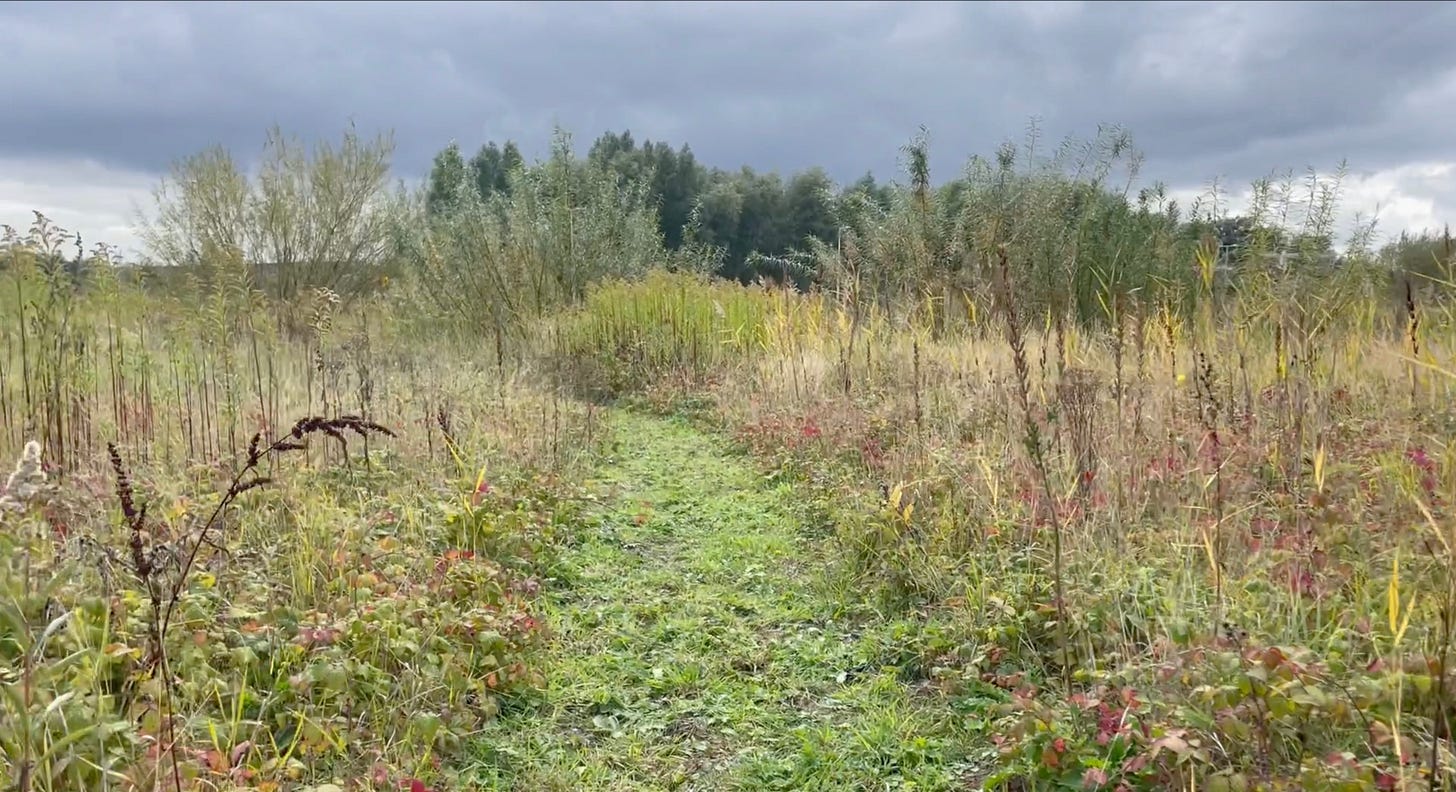Urban rewilding: the subtle art of not doing a f*ck
Doing less is taking root as a new urban design principle — saving money and making space for wild nature to thrive in cities.

For centuries, humans have tried to tame nature. The result: neatly trimmed parks, orderly gardens, and manicured green spaces. But a shift is underway. Across the world, a new approach to landscape design is gaining ground — one that places nature in control. This emerging design ethos champions wildness, inviting ecosystems to flourish on their own terms. Are we entering the age of rewilding?
The war on wildness
We all know the type: immaculate city parks, boxed-in hedges, pristine lawns, and the eternal battle against weeds, moss, and slugs. Municipal green services invest heavily in keeping nature at bay, using robot lawnmowers, pesticides, and paved-over public spaces.

But what exactly are we fighting? More and more ecologists, landscape designers, and urban planners are recognising the potential of wilderness — not only in vast nature reserves, but also in roadside verges, vacant lots, and residential neighbourhoods.
The Wild Mile
Opened in 2024, The Wild Mile in Chicago is the world’s first floating eco-park. Built on modular floating platforms, the project embraces a wildlife-first philosophy, allowing natural processes to take the lead. More than 60 species of native aquatic plants dangle their roots into the water, creating a natural filtration system that absorbs metals and pollutants. The result: a self-sustaining habitat for fish, birds, and insects — and a new kind of urban public space.
To be fair, this wildness was kick-started by the planting of native species like marsh marigold, buttonbush, and willow herb. But the long-term vision is clear: nature is in charge. The Wild Mile cleans up a formerly industrial canal and fits into a broader agenda for urban ecological regeneration.
The Pioneer Park
In Amsterdam-West, we’ve explored similar ideas ourselves with the Pioneer Park, a one-hectare experimental site on a vacant plot. The concept is simple: let nature take over. Besides paths, seating areas, and a bit of signage, nothing has been planted or maintained. On the barren sandy soil, pioneer species appeared within months — poppies, cornflowers, and rapeseed. By year two, the area was home to willows, birch, hares, foxes, and nesting birds.
The park offers local residents a space to escape the city buzz, go for a walk, or have lunch. The cost? A fraction of what a traditional city park would require. The Pioneer Park serves as a blueprint for temporary wild parks on unused land — green oases initiated by nature, maintained by communities.








